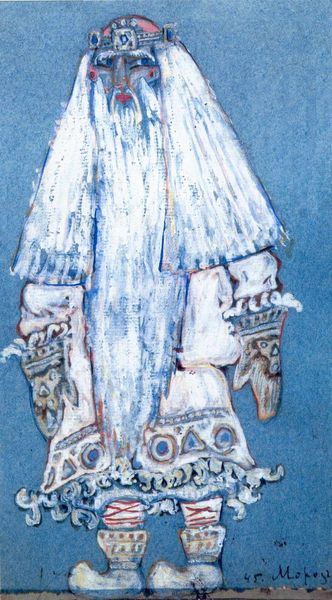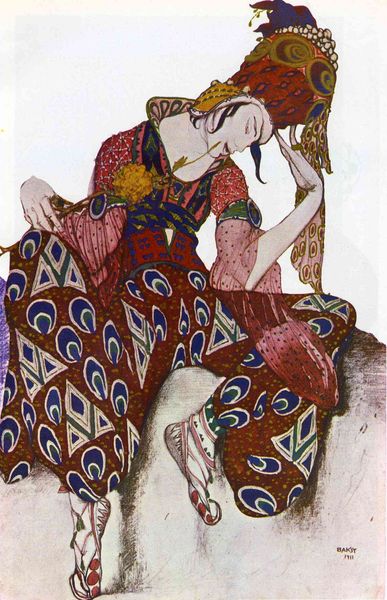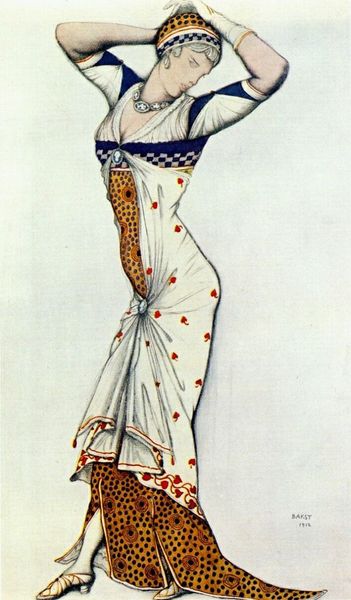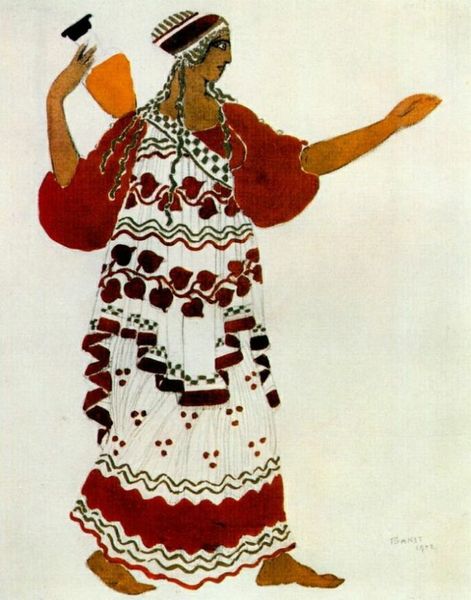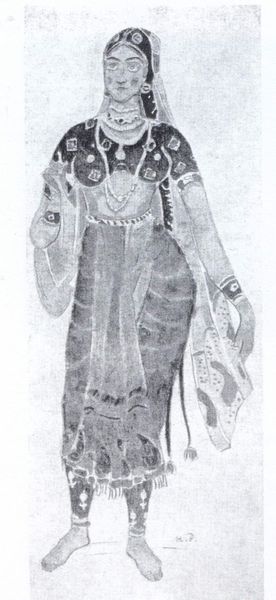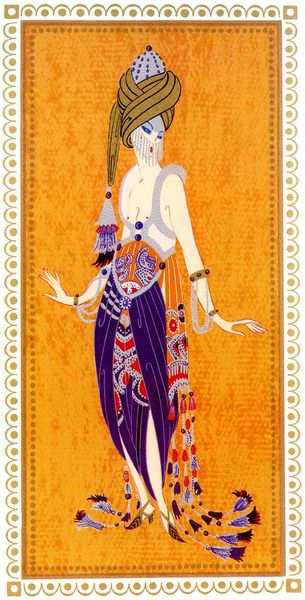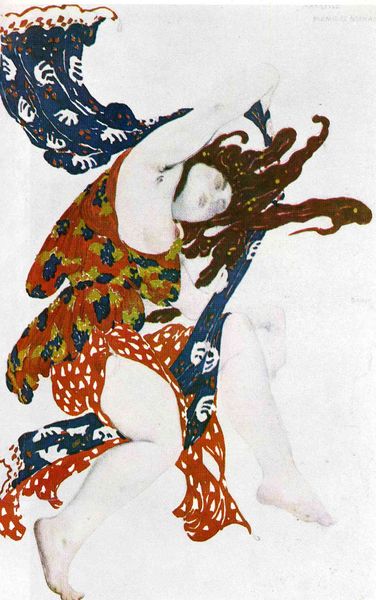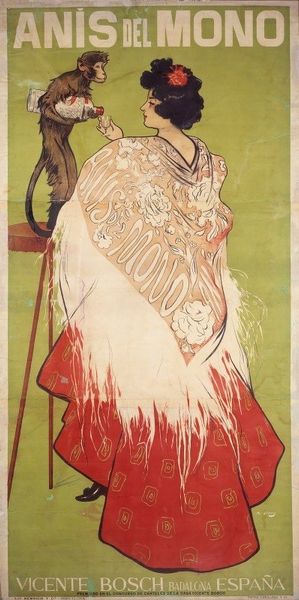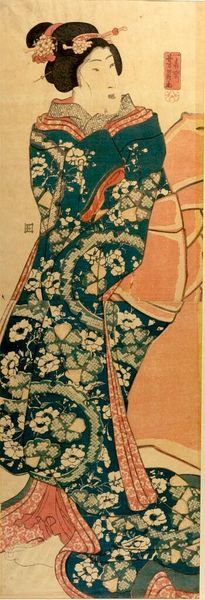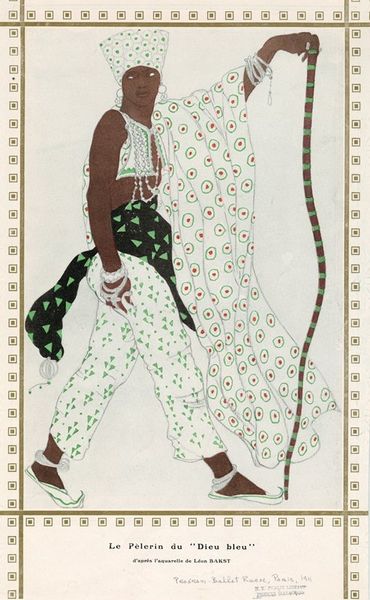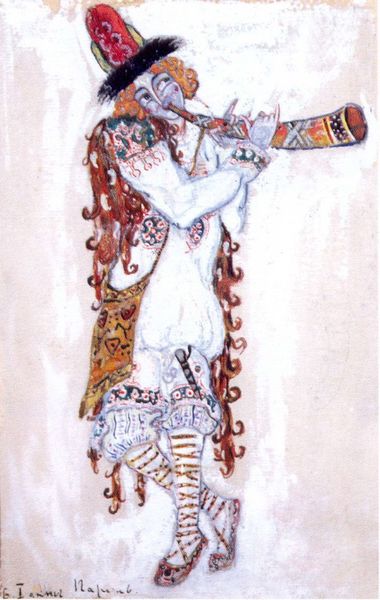
drawing, pencil
#
portrait
#
pencil drawn
#
drawing
#
pencil sketch
#
figuration
#
pencil drawing
#
pencil
#
traditional art medium
#
costume
#
symbolism
#
dress
Copyright: Public domain
Curator: Well, hello there! Immediately I'm struck by the sketch's elegance; there's a dreamlike, airy quality that I find captivating. It's a lovely vision in white and blue. Editor: Indeed! We're looking at "Helene de Sparte," a costume design crafted by Léon Bakst for Ida Rubinstein's portrayal of Helen of Sparta. The medium is primarily pencil on paper, though one suspects some faint coloring exists as well. Its significance resides in understanding the historical context and Rubinstein’s own subversive gender politics. Curator: Costume design… that explains so much. It definitely reads as a "statement" piece. You know, bold, but in a contained, artistic way. The pencil strokes lend such grace and movement to the figure; it practically floats off the page. Did Bakst do other theatrical work? Editor: Absolutely. Bakst, affiliated with the Ballets Russes, pushed boundaries in early 20th-century theater. His work with Diaghilev re-imagined stagecraft through the lens of symbolism and Orientalism, which inevitably created controversy. This sketch, in that context, challenges the conventional beauty standards of the era. It questions the role and image of women like Rubinstein within patriarchal structures. Curator: The details—the stylized hearts on the fabric, the delicate sandals… there's an almost reverential quality to them. I wonder what it was like to actually see this come to life on stage? Editor: It would have been transgressive and provocative. The classical tale gets refracted through modern concerns, especially when understood against the backdrop of the Ballet Russes' own provocations concerning sexuality and cultural appropriation. It invites viewers to reflect upon the multifaceted layers of representation, power, and identity. Curator: The pose and style manage to blend strength with ethereal beauty, wouldn’t you say? So striking. Editor: It’s through pieces like this we see the seeds of the avant-garde being sown within what some might dismiss as mere stagecraft. It provides a nuanced perspective on Bakst’s larger role within modern art. Curator: I hadn’t thought about that… Thank you; that added a new dimension for me! Editor: Glad to share it. It has been wonderful to delve a bit deeper and expand our understandings, wouldn’t you say?
Comments
No comments
Be the first to comment and join the conversation on the ultimate creative platform.
